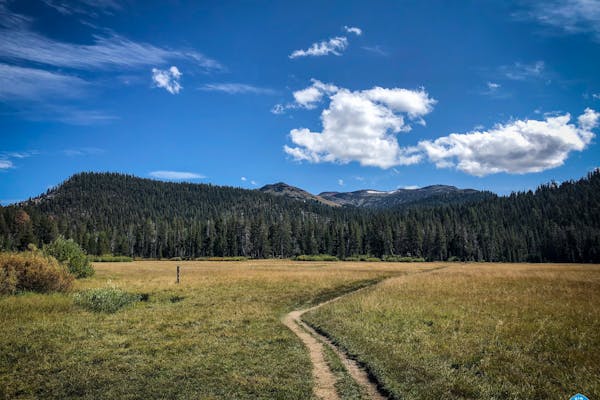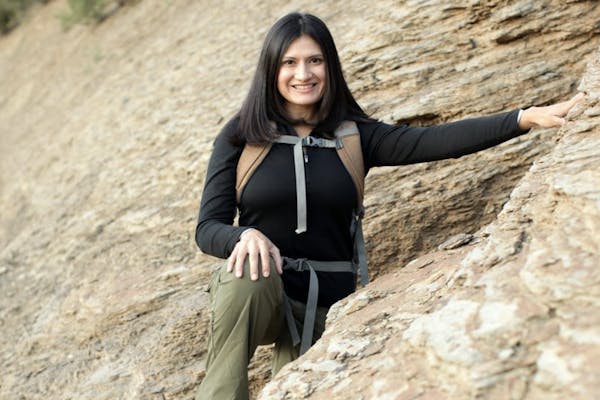A deeply gouged hand in Norway, a severe allergic reaction in Chile, a broken wrist in Nicaragua, and a face-ground collision in the Pacific Northwest. Before you label me as an accident-prone wreck,
let me defend myself by saying I wasn't the patient in these stories. However, I was the guide or bystander with readily accessible medical supplies, and thus, the primary caregiver in all of these unfortunate events.
In addition to learning that volcano boarding in Nicaragua is a dangerous yet epic undertaking, I also became acutely aware of what first aid equipment is essential and the importance of a well-stocked medical kit. Stuff happens when you least expect it, and you should always have at least a basic first-aid kit with you when you head out for a day or week of adventuring!
When it comes to preparing a first-aid kit, I typically organize my items into three categories.
- Must-Have/Irreplaceable
- Medications
- Helpful If Space Permits
There's a landslide of medical tools and merchandise on the market that can fall into these categories, and I understand just how tough it can be to pick out what you need. What if you miss something crucial and then need it out in the field? It can be stressful choosing one item over another, so let me help – my knowledge as a guide and previous search and rescue team member is at your disposal.
Now I'm not here to tell you precisely what you need for your first aid kit. Every kit is different, and my goal is to provide a map and tips to point you towards the road to a well-stocked kit. So let’s get to it and prepare you for the fast-approaching season!
Must-Haves
The following items are my go-to items when preparing a med-kit. They're useful for various situations, weigh very little, and I never leave home without them.
Pro Tip: Consider what is truly irreplaceable in the field. These are items that are very difficult, or impossible, to improvise in the field if you forget them.
Tape
I cannot overemphasize the importance of good tape. Secure a splint in place. Cover a raw spot on your ankle. Tape up a rolled ankle. Help repair a broken tent pole. Or render lifesaving intervention to a boot that's about to fall apart.
I never adventure without tape, and I could make a case for tape being the #1 essential first aid tool that you can have. But this leads to the question, "what type of tape should I get?"
You can't go wrong with Leukotape. This tape practically forms another layer of skin wherever you put it on. I've covered my heels with this tape to avoid getting blisters, and it was still there after a 5-day backpacking trip!
Also, consider wrapping duct tape around a water bottle. While not the best for medical purposes, unless you’re in a pinch, it’s incredibly helpful for shoring-up torn tents, sleeping bags, or even pants – and you’ll then achieve the pro backpacker level look with hiking pants held together by duct tape.
Light
While not a medical item, proper lighting is crucial if someone gets hurt in the dark or an injury causes you to be out later than you planned. Honestly, if someone is hurt in the dark and you don't have proper lighting, then the rest of your care will be sub-par or non-existent.
My best advice, find a super lightweight and compact headlamp to store in your med-kit.
Band-Aids Or Steri-Strips
Cuts and scrapes are very common for almost any activity. Therefore, it's wise to pack some type of covering or wound closure to protect these injuries and help them heal.
Band-Aids are the classic option and can certainly help cover a minor cut or superficial scrape. However, I’d also recommend packing Steri-strips for deeper and more severe lacerations. These are narrow adhesive strips that work almost like stitches. They hold the wound closed, allow the blood to clot, and give the skin a chance to heal.
Cotton Swabs (Q-Tips)
No, cleaning your ears isn't pivotal while adventuring. But cotton swabs are a lifesaver in a few ways. First, they're surprisingly effective as a tool to help get debris out of someone's eye. Second, they're helpful for gently cleaning or spreading ointment on a scrape or cut. Last but not least, they can act as mini-splints for hurt fingers.
Tweezers
Splinters are conniving little devils. They strike when we least expect and get in just the right place where it's almost impossible to remove them without help. So throw a pair of tweezers in your med-kit. They weigh practically nothing, and you'll be glad you have them if the need ever arises.
Even a more nefarious foe than splinters is a tick. They’re hard to remove and potentially carry some very nasty tick-borne illnesses. Even though there are tick-specific removal tools out there, the CDC recommends tweezers as the best method to remove ticks quickly and effectively. Check out the CDC’s website for tick removal instructions.
Emergency Bivy
If you’re tending to an injured friend, the absolute last thing you want is for them to become hypothermic on top of their injury. Not just an uncomfortable bummer, hypothermia can quickly become lethal. So, throw an emergency bivy into your med-kit.
A bivy is essentially a bag lined with heat-reflecting material. It will keep you or your patient – or both of you if you get the XL version – warm and dry in even the worst weather. Alternatively, a basic heat-reflective emergency blanket will also suffice but doesn’t offer the same level of protection as a bivy.
Additional Items
For conciseness, here's a list of additional first aid options that I consider must-have items.
- Safety Pins: useful for securing wraps or makeshift slings.
- Knife/Trauma Shears: for cutting through clothes to an injury or cutting straps off a pack to use.
- Sterile Gauze: to stop bleeding and cover wounds.
- Antibacterial Wipes: for cleaning hands and wounds.
- Lighter or Waterproof Matches: In case you’re stuck outside overnight in cold weather.
- Syringe: Ideal for flushing wounds with clean water.
Medications: discussed below

Medications
Let's now take a look at common medications that are often wise to include in your first aid kit.
Pro Tip: The medications you bring very much depend on your circumstances. Have bad allergies? Bring more allergy relief. Prone to muscle or joint pain? Bring more pain medication. Think about what you need to stay comfortable, and stock your first aid kit accordingly.
Prescriptions
Hiking and adventuring is not the time to take a break from your regular prescriptions. Your body may react badly if you suddenly stop taking your prescriptions and heavily exert yourself for days on end.
So measure out how much you need, and bring your prescriptions with you when you head out on your adventure.
Pain Management
Perhaps a guide's best friend: painkillers. Headaches, sore joints, achy muscles, tender feet, the list goes on and on. Therefore, I highly recommend your first aid kit includes at least a basic stock of painkillers.
The leading brands out there are:
- Ibuprofen (Motrin)
- Tylenol
- Aspirin
Additionally, be aware that some medications shouldn't be taken together. So check to make sure that any prescriptions you bring won't react badly with a painkiller.
Allergy Medication
Itchy eyes and a runny nose while hiking is a huge fun-killer! Allergies make it hard to sleep and enjoy your adventure, so be sure to pack some allergy medication if you're prone to this trouble.
My go-to allergy medication is Benadryl.
Antibiotic Cream
From someone who once ignored a minor scrape that subsequently got infected – just don't. Throw some antibiotic cream into your medical kit and use it on those annoying scrapes and cuts that often accompany a solid adventure.
Additional Options
Here are a few additional medications that may not be absolutely critical but are worth considering.
- Anti-itch cream: for bug bites or plant stings.
- Anti-Diarrhea medication: self-explanatory.
- Rehydration tabs: for hot weather where dehydration is possible.
- Water Purifying Tabs: for making water safe to drink.
Helpful if Space Permits
Next on the list are valuable items that I still recommend but can be improvised in the wilderness if needed.
There's a saying among backpackers and guides, "If you don't have it, you don't need it." I generally consider these items to fall into that category where if you don’t have them, you can typically find a workaround.
But once again, my goal is to help you identify first-aid essentials that should be on your radar when preparing your kit. So consider where you’re going, what you’re doing, and what you need. It’s entirely possible that an item on this list may be a top priority for you, so season my information with your own knowledge and considerations.
Splint
The SAM splint is incredibly useful. It can be molded into almost any shape and support any number of issues, from a broken leg to a sprained wrist.
However, I didn't have a splint when I encountered a broken wrist in Nicaragua. In this case, the handle from a volcano board offered enough support until we got back to the city. Alternatively, sticks, branches, and tent poles can provide excellent stabilization.
Bandage/Wrap
This tool is very helpful for holding gauze over a wound or wrapping an injured joint. I love Coban from 3M because it sticks to itself. No pins required and no unraveling at the worst possible moment.
While tape can fill the same role, a wrap is beneficial as you can adjust it after application. As a backpacker with hairy appendages, I’d almost rather face an angry bear than have someone rip off tape to adjust the tightness!
While we’re on the subject of wraps, be aware that sprained and rolled ankles are the most common injury I see on the trail. While wrapping is a good treatment, think about prevention beforehand. Ankle braces and compression socks are good options, along with mid-height boots like the Oboz Sypes for a little extra support.
Sling
Hurt shoulders, elbows, and hands can often benefit from a triangular sling to keep them protected.
If you don't have one, consider using safety pins (on our essentials list) to pin a sleeve to a shirt front for a makeshift sling. Or roll up the bottom of the shirt and pin it to the chest as an alternative method.
Additional Options:
Here are some additional items that can be very beneficial to have on hand.
- Tourniquet: for severe bleeding.
- CPR Mask: to keep you safe while performing CPR.
- Finger Splints: handy for stabilizing finger injuries.
- Medical Gloves: to keep you safe from any blood-borne illnesses while helping other people.
- Trauma Dressing: for severe lacerations and wounds.
Final Thoughts
Never underestimate the importance of your first-aid kit! It can truly make the difference between a minor inconvenience on the trail and a major calamity. But this article lays the groundwork for a well-stocked kit that will take care of you and allow you to keep crushing your adventures.
Have fun and stay safe, eh?




